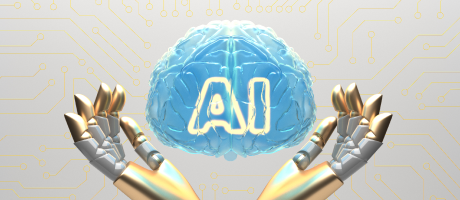Blog Posts & Blog Archives
All Blogs / it-and-computer
Virtual Reality The Technology and Its Future
Explore the current state, applications, and future potential of Virtual Reality technology, from gaming to healthcare and beyond.
Sunday, June 30, 2024
Virtual Reality The Technology and Its Future
Virtual Reality (VR) has long been the subject of fascination and speculation, capturing the imaginations of sci-fi writers and tech enthusiasts alike. Today, VR is no longer a concept relegated to the realm of fantasy; it is a rapidly advancing technology with the potential to revolutionise various aspects of our lives. This blog explores the current state of VR technology, its applications, and the promising future that lies ahead. Virtual Reality (VR) is the use of computer technology to create a virtual world. Unlike traditional user interfaces, VR immerses the user in a virtual world. Users are immersed in 3D environments and may interact with them rather than seeing a screen in front of them. This is accomplished through the use of VR headsets, which include head-mounted displays (HMDs) that give a stereoscopic view of the virtual world and motion-tracking sensors that respond to the user's motions. VR technology relies on several key components to create an immersive experience: Headsets: Devices like the Oculus Rift, HTC Vive, and PlayStation VR are equipped with high-resolution displays and optics that provide a wide field of view. These headsets also include sensors to track head movements, ensuring the visual perspective shifts in real time. Input Devices: To interact with the virtual environment, users can use handheld controllers, gloves, or even body suits equipped with sensors. These devices track the user’s movements and translate them into the virtual world. Software: VR experiences are powered by sophisticated software that creates and manages the virtual environment. This includes rendering 3D graphics, simulating physics, and providing audio feedback to enhance realism. Computing Power: Running VR applications requires significant computing resources. High-end gaming PCs, consoles, or specialised VR-ready devices provide the necessary power to render detailed virtual worlds seamlessly. The most well-known use of virtual reality is probably gaming. VR games offer players an unprecedented level of immersion, allowing them to step into fantastical worlds and interact with them in ways that were previously impossible. Beyond gaming, VR is also making waves in the entertainment industry, with VR movies and experiences that place viewers in the center of the action. VR offers enormous promise in the fields of education and training. It offers a secure and regulated environment in which students may learn and practice new skills. Medical students may do virtual surgery, pilots can practice with flight simulators, and engineers can create virtual prototypes. This hands-on approach increases understanding and retention. Healthcare In healthcare, VR is being used for a variety of applications, from pain management to physical therapy. VR can provide distraction therapy for patients undergoing painful procedures, and it can create virtual environments that help stroke patients regain motor skills through guided exercises. VR allows architects and real estate professionals to create virtual walkthroughs of buildings and properties. Potential buyers can explore homes and office spaces without having to physically visit them. This technology also aids architects in visualizing their designs in a 3D space, making it easier to identify and address potential issues. Virtual Reality is also transforming social interactions. VR social platforms, like VRChat and Facebook Horizon, enable users to meet and interact with others in virtual spaces. These platforms provide a new way to connect with people from around the world, fostering a sense of presence and community that transcends physical distance. The future of VR looks promising with continuous advancements in hardware. Lighter, more comfortable headsets with higher resolution displays and wider fields of view are on the horizon. Eye-tracking technology will enhance the realism of virtual experiences by allowing for more natural interactions and improved graphics rendering. The shift towards wireless and standalone VR devices is another significant trend. Devices like the Oculus Quest have already demonstrated the viability of untethered VR experiences. This evolution will make VR more accessible and convenient, eliminating the need for powerful external hardware. As virtual reality technology advances, its uses will grow.In addition to existing uses, we can expect to see VR making an impact in areas like virtual tourism, remote work, and mental health therapy. VR can provide immersive travel experiences, create virtual workspaces, and offer therapeutic environments for treating anxiety and PTSD. The integration of VR with other emerging technologies like Artificial Intelligence (AI) and Augmented Reality (AR) will unlock new possibilities. AI can enhance VR experiences by creating intelligent virtual characters and adaptive environments. AR can complement VR by blending virtual elements with the real world, creating mixed reality experiences. Despite its promise, VR has some issues that must be solved. These include issues related to motion sickness, high costs of equipment, and the need for substantial computing power. Moreover, as VR becomes more integrated into daily life, ethical considerations around privacy, data security, and the impact on mental health will become increasingly important. Virtual Reality is poised to transform the way we interact with digital content and the world around us. From gaming and entertainment to education and healthcare, VR offers a wealth of possibilities that are only beginning to be explored. As technology continues to evolve, the future of VR promises even more immersive, realistic, and accessible experiences. The journey of VR has just begun, and the next few years will undoubtedly bring exciting advancements that will redefine our understanding of what is possible in the virtual realm. Understanding Virtual Reality
What is Virtual Reality?
How Does Virtual Reality Work?
Applications of Virtual Reality
Gaming and Entertainment
Education and Training
Real Estate and Architecture
Social Interaction
The Future of Virtual Reality
Advancements in Hardware
Wireless and Standalone Devices
Expanded Applications
Integration with Other Technologies
Challenges and Considerations
Conclusion:
Related Blogs
The Evolution of Artificial Intelligence from Its Early Days to the Present
Explore the journey of Artificial Intelligence, from myths to cutting-edge technology, highlighting key pioneers, breakthroughs, and ethical considerations.
By WelinkJobs | Monday, April 15, 2024
The Evolution of Wireless Networks, Their Challenges, and Their Promising Technologies
Explore the evolution of wireless networks from 1G to 5G, the challenges faced, and promising future technologies like 6G, quantum communication.
By WelinkJobs | Friday, May 24, 2024



